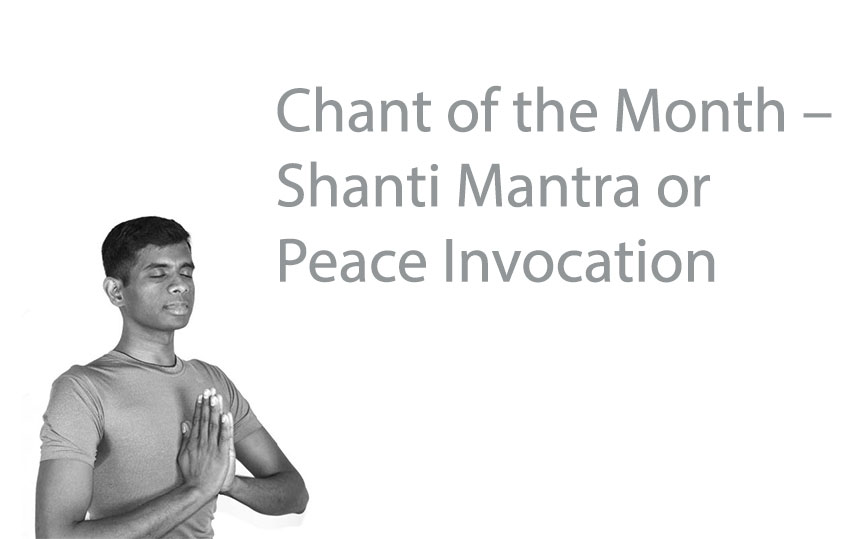In India, teacher and students would recite the peace invocation together in the beginning of each Yoga class. It is done so as to seek blessings from the God for study, to be rid of obstacles, eg poor memory, inability to concentrate or poor health. It also includes blessings for peaceful and amicable relationships.
Therefore, this prayer is important for both the teacher and the student.
Om saha naavavatu Aum. May god protect us together
Saha nau bhunaktu May he accept and nourish us together
Saha viryan karavaavahai May work together with great power
Tejasvi naavadhitamastu May our learning shine brightly
Maa vidvishhaavahai Let there be no discord amongst us
Om shantih shantih shantih Aum. Peace. Peace. Peace
This mantra which occurs in Katha Upanishad, emphasises the importance of the fruitful relationship between the teacher and the students. The feeling of togetherness and the unity of purpose enhances the efficacy of their efforts to the pursuit of spiritual knowledge. The desire for having this relationship free of any discord arises from the deep humility and the unbounded love felt in the presence of the divine energy within one’s own.
Shanti mantras always end with three utterances of word “shanti”. The reason for reciting three times refers to the calming of oneself and removing obstacles from three sources which are 1. Adhi- Bhautika; 2. Adhi Daivika; 3. Adhiyaatmika
1. Adhi-Bhautika – source of obstacles coming from external world, such as from wild animals, people, natural calamities etc
2. Adhi-Daivika – source of obstacles coming from extra-sensory world of spirits, ghosts, deities, demigods/angels etc
3. Adhyaatmika – source of obstacles arising out of ones own body and mind, such as pain, diseases, laziness, absent-mindedness etc


















 Other
Other